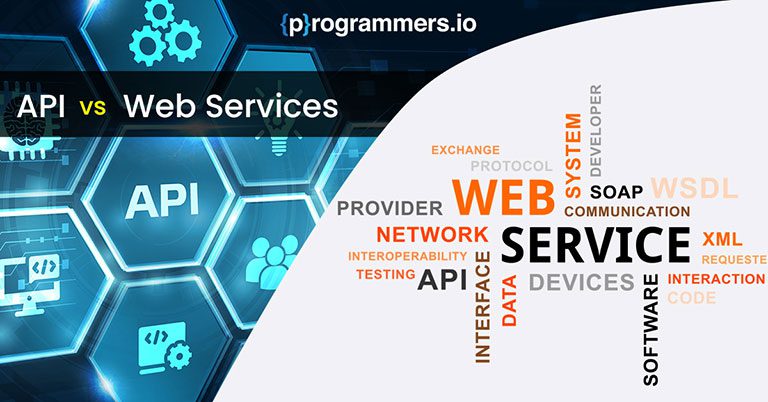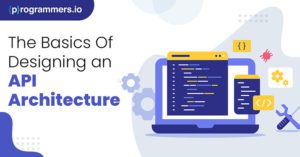Difference Between API and Web Services
Web services and APIs are two common tech terms that are often used interchangeably. Many users are often confused about how to use these terms for the best possible results. The recent growth explosion in the integration economy has meant that the way we build software is changing at an unprecedented pace.
With thousands of new APIs in the market, there is an API solution for virtually every business need: communication APIs, shipping APIs, payment APIs and hundreds more.
Although there is some overlap between web services and APIs, there are some differences as well between both. In this article, we study APIs and web services in detail and help you pick a winner based on your understanding of their pros and cons.
What is an API?
The most common integration process followed by organizations is the Application Programming Interface or API. While API can be divided into different subcategories like public, partners and private, they all focus on the principles of application integration. Organizations can use these interconnections and ensure the seamless transmission of data across solutions.
Advantages:
- API systems use product code handling and can handle all variations in data across systems.
- The links available in these systems allow for smooth operations and procedures.
- Since it is the most common strategy for integration, API is available across all projects.
Disadvantages:
- Programming the code for APIs can be time-intensive.
Suppliers play a role in API dependability.
How to Create Great API Design
The breakneck pace of API development has led to massive improvements in convenience, but at the compromise of distinction and ingenuity. Regardless of whether you build an API platform, open-source API or an integration API for other developers, the success of the end result depends on how it stands out from the rest.
Let’s dive into the unknown secrets of building great API design. Note the information as soon as possible, because it won’t remain hidden for long.
Reduce Time to Value
A great API should shorten time to value (TtV). Time to value is the amount of time it usually takes developers to derive value from the API. You can shorten TtV by allowing your users to validate cURL responses within the docs. This allows value to be delivered before developers start integrating with the API.
Treat Docs as Your Home Page
Your API docs page should get the same treatment as your website’s home page. It is your storefront and is the focal point of attention for developers. The page should be intuitive, user-friendly and easy to navigate. Your documentation library should also be organized consistently so that it is easily discoverable.
Read: API Management Tools
Future Proofing
Developers will head to your API to reduce wastage from their workflows. Your API should hence follow the most efficient trends within the developing world to offer a frictionless experience. Trends within the software engineering domain are changing at a breakneck pace.
The current delivery of simple JSON responses from a cURL command is an implementation of a frictionless experience. You can future-proof your platform by adding GraphQL APIs.
Successful API experiences are achieved through consistent delivery and trust. You can build trust in programmers by following the secrets above and ensuring your API works as expected at all times.
What are Web Services?
A web service is a collection of standards and protocols used for integrating information and data between multiple systems and applications. Different software applications are written using multiple programming platforms. A web service allows you to integrate data across different computer networks without disturbing the flow of information.
Pros
Enhanced Productivity
The most significant and important advantage provided by data integration in the workplace is functionality. Functionality promotes efficiency and helps improve overall productivity as a result. From placing purchase orders to fulfilling customer requests and contacting vendors, every step is vital for successful operations. Having to manage an entire supply chain and the different processes in it manually can be taxing and can lead to human errors as well. Integration allows employees to focus on the things that matter, while the translation and transfer of materials is automated.
Optimized Data Management
Carrying on from what we discussed above, a software integration process can help enhance the operational functions inside the firm. Without software integration, a normal business would spend an extended amount of time trying out different solutions and running analyses individually. This is the age of data, and optimized data management is the need of the hour.
Reduced Expenditures
An integration system can help lower the labor costs incurred by an organization, as the enhanced data generation and handling processes would otherwise require additional labor hours and payments.
Improved Customer Service
Businesses that use integrated software solutions in their business can increase the service speed with which they provide solutions to customers. An integrated solution can eliminate the need to go through multiple processes for a single solution.
Cons
Complicated Upgrading
While a software integration process does link all systems and software processes together, organizations still have to upgrade the different software solutions separately. The separate upgrading of different solutions can be complex and requires IT workers and a lot of time.
Security Issues
An integrated software solution is tasked with handling all business data under one roof. Organizations should put an extensive security protocol in place, as without one, the data can be considered at risk.
We hope you are able to choose between APIs and web services for integration by the end of this article. Implement this information for seamless integration.
How can we help you?
We have hundreds of highly-qualified, experienced experts working in 70+ technologies.









